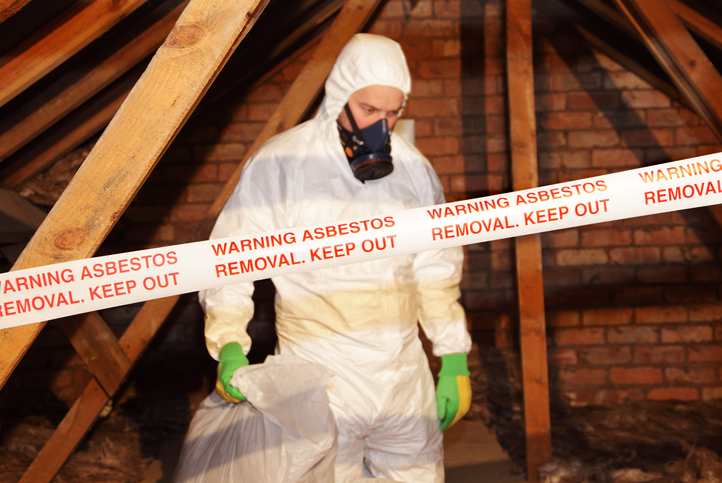
Global Asbestos Awareness Week (GAAW) is recognized every year during the first week of April. This is a week dedicated to spreading awareness about the dangers of asbestos, a human carcinogen that was frequently used in building materials prior to the 1980s.
While all uses of asbestos were banned in Australia in 2003, this dangerous mineral is still found in homes and buildings to this day. It is important for homeowners, renovators and construction workers to understand the health consequences of asbestos, and overall, how to ensure they are staying safe.

What is Asbestos?
Asbestos is a naturally occurring mineral that is known for its unmatched heat resistance and ability to absorb sound. These unique qualities are what made it a no brainer when incorporating it into building materials such as insulation, roofing tiles and flooring tiles. In the event of a fire, asbestos can slow the burning process, allowing time for people to evacuate and preserve the overall integrity of the structure to stay intact for longer periods of time.
While asbestos was once viewed as a miracle mineral, this was only until the serious health effects were discovered due to its usage.
Unfortunately, when asbestos is disturbed, fibers are released into the air, leaving individuals vulnerable to inhaling or ingesting them. Once in the body, these fibers can become embedded in the lining of our internal organs, leading to mesothelioma cancer.
Mesothelioma primarily affects the lungs, but can also develop in the lining of the stomach and heart. According to the Australian Institute of Health and Welfare, there are 700 to 800 new mesothelioma diagnoses every year, and in 2018, nearly 700 people died from this disease.
Protect Yourself
Those who are most at risk of being exposed to asbestos are people living in homes with asbestos-containing materials (ACMs), renovation contractors and construction workers. People still continue to be exposed to asbestos today due to a lack of knowledge when it comes to ACMs. Exposure is something that unknowingly happens, as asbestos is invisible to the naked eye.
If you are going to renovate your home, or you are a worker who is prone to being exposed, you should have asbestos testing done to ensure that you are mitigating any risk involved. By testing suspected ACMs, you will know if they contain asbestos and how to dispose of them if necessary.
Asbestos abatement can be tricky depending on the materials, so sometimes it can be more beneficial to monitor the ACMs and have them properly repaired if deemed hazardous. If you are going to have ACMs abated, be sure to hire a certified abatement specialist.
When renovating, it is imperative that you seal off the area from any immediate friends or family members and wear protective clothing.
Things such as a HEPA-filter facemask and clothing that can be bagged and disposed of after renovating is a great way to limit exposure to asbestos; however, it is recommended to not renovate if you know your living space harbors ACMs.
Spread Awareness
Help your friends, family and neighbors by telling them about the dangers of asbestos exposure. If you know someone who is going to be renovating their home, give them a heads up about ACMs and suggest what they should do to be sure they are protecting themselves.
The more people that understand asbestos and the health implications it creates, the greater of a decline we will see in mesothelioma diagnoses. With mesothelioma being one of the only non-genetic forms of cancer, it has the potential to be completely eliminated.
Post submitted by Mesothelioma.com


